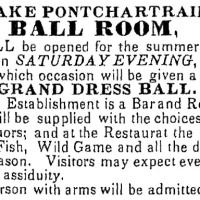 I can’t remember when restaurant servers began automatically asking if you wanted to take home food left on your plate but I know it’s a relatively recent phenomenon. It used to be that food was wrapped up only if patrons asked.
I can’t remember when restaurant servers began automatically asking if you wanted to take home food left on your plate but I know it’s a relatively recent phenomenon. It used to be that food was wrapped up only if patrons asked.
Probably some customers have always smuggled away food from restaurant tables, usually in napkins. Maybe to stop this, the custom of furnishing diners with bags in which to take home leftovers began after the second World War when upward mobility widened the dining public. Doggie bags went into production around the mid 1950s and their use increased tenfold in Chicago in the 1970s, according to a Chicago Tribune story.
But what is interesting is how many people were embarrassed by the practice. Well into the 1970s etiquette columns in newspapers got letters from restaurant patrons asking if it was ok to ask for a doggie bag if they didn’t have a dog. Usually the writer cited a spouse or friend who objected to the custom. A typical query is the one in 1964 from a wife whose husband “looked aghast” when she asked for a bag and told her it was in poor taste to take home table scraps. Nonetheless, with the exception of Elizabeth Post, Emily Post’s granddaughter by marriage, advice columnists invariably approved of doggie bags as sensible if not downright virtuous.
 Doggie bags and other containers grew more acceptable in the 1970s – but not in all restaurants. The most expensive and elegant places, such as the Four Seasons and upscale French restaurants, showed a distinct dislike of the custom. Many would only provide a container if asked, and then often fashioned a swan of aluminum foil as if to say, “We don’t make a habit of this – this is just for you.”
Doggie bags and other containers grew more acceptable in the 1970s – but not in all restaurants. The most expensive and elegant places, such as the Four Seasons and upscale French restaurants, showed a distinct dislike of the custom. Many would only provide a container if asked, and then often fashioned a swan of aluminum foil as if to say, “We don’t make a habit of this – this is just for you.”
There are a number of explanations why taking home leftovers has not always been universally accepted by restaurants or their guests. Some restaurants cite health concerns. French restaurateurs are offended by the idea of someone microwaving their cuisine; they believe food should be eaten just at the moment the chef sends it to the table. Diners who are the least bit intimidated by a restaurant or its servers are unlikely to ask to take food home. I was recently in a restaurant that does not permit guests to place jackets or coats on the back of their chairs. I am certain they would cringe at a request to take away uneaten food (and I’ve never seen it done there). In any event, the small portions served in this and other upscale restaurants do not allow any provision for future meals. Other restaurants handle the matter discreetly. In a power lunch spot in Los Angeles, diners must pick up their leftovers, packed in a tasteful tote bag, at the front desk as they leave. No styrofoam box sitting on tables through the dessert course there!
On a deep socio-psychological level the reasons doggie bags carry a degree of embarrassment and often are not accepted by elite restaurants are the same as why it’s considered poor manners to smack or gobble. Higher status accrues to those who disguise hunger by eating slowly, who appreciate small portions, and whose delicate appetite requires “appetizers” and little dainties with names such as “amuse bouche.” Leaving food on the plate communicates the absence of animal neediness. It is a version of Thorstein Veblen’s concept of “conspicuous consumption” in that it flaunts the diner’s ability to walk away from perfectly good food.
© Jan Whitaker, 2010












 It's great to hear from readers and I take time to answer queries. I can't always find what you are looking for, but I do appreciate getting thank yous no matter what the outcome.
It's great to hear from readers and I take time to answer queries. I can't always find what you are looking for, but I do appreciate getting thank yous no matter what the outcome.



Pingback: Alles für den Hund: Warum das Doggy Bag unpopulär ist
Pingback: Restauration et « doggy-bag »: les français restent sur leur faim | Même pas mal
Pingback: Origin of the Doggie Bag | Le Continental
I really enjoyed this article. I am working on a research project and by any chance do you still have the link to the Chicago Tribune article?
Thanks so much!
Does anyone have experience with the doggy bag in France?
Pingback: Gefrituurde insecten, Porridge en kikkerbillen « Cultureel Bepaald
In the UK and most European countries most people don’t even understand the concept of a doggy bag.
http://www.bbc.co.uk/news/magazine-15106212
It’s so wasteful to throw away good food. People should be ashamed for not asking for a takeaway bag.
Really interesting topic. As far as I know in Germany it’s still not “normal” that waiters ask automatically if you want to take home the leftovers. The guest has to ask for a doggie bag and in a fine restaurant it would be a sign of bad manners to do so. It seems that it is more accepted in some ethnic restaurants: greek, turkish or chinese.